3DWarehouse

ATAK T-129 (Turkish Attack and Reconnaissance Helicopter)
by 3DWarehouse
Last crawled date: 1 year, 9 months ago
T129 ATAK is the result of the integration of nationally developed high-tech avionic equipment and weapon systems on to the combat proven AgustaWestland A129 airframe, with upgraded engines, transmission and rotor blades. Optimized for 'hot & high' environments, TAI claims the T129 is the most efficient Attack Helicopter in its class. In May of 1997, the Turkish Military issued an RFP (Request for Proposal) for the purchase of 145 attack helicopters. The Turkish Army needed a fully integrated, low Life Cycle Cost advanced technology multi-role Attack and Reconnaissance helicopter system to provide enhanced mission effectiveness by increased lethality, flexibility, growth capability, mobility, supportability, availability, maintainability, reliability and survivability with increased operator and maintainer efficiency. Turkish Attack and Reconnaissance Helicopter was designated as ATAK (Turkish Attack and Reconnaissance Helicopter). ATAK was to perform both attack and reconnaissance missions and have both Air-to-Air and Air-to-Ground combat capability comprised in one platform. Configuration change is desired to be accomplished at Aviation Unit Level. ATAK was to have limited capability (landing, take-off, refueling, re-supply) for operations from ships. Air vehicle was to have twin engines, multi-bladed rotor, two tandem flight stations, be single pilot operable from either crew station. Sufficient endurance and range to accomplish mission profiles with internal fuel was required. Low altitude, high-speed flight, Nap-Of-Earth (NOE) flight and autonomous search andtarget acquisition capability was desired. ATAK will be located in attack battalions and training fleet. Total number of attack battalions is 5. In each attack battalion, there will be 27 helicopters. In training fleet the number of helicopters located is 10. ATAK shall provide attack battalions with highly mobile and lethal attack capability against personnel, ground and air targets. Mission shall be conducted during day/night extreme/adverse weather partially in NBC (Nuclear, Biological and Chemical) environment. The $3.5-$4.5 billion deal brought bids from five companies: Boeing (USA) AH-64D 'Apache Longbow' Bell-Textron (USA) AH-1Z 'KingCobra' Kamov (Russia) Ka-50-2 'Erdogan' Agusta (Italy) A129-I 'Mangusta' Eurocopter (France-Germany) UHU-HAS 'Tiger' In July of 2000, Turkey announced its decision to buy Bell Helicopter's AH-1Z King Cobra. The major difference between the USMC version of AH-1Z and the Turkish version KingCobra was the Targeting and Fire Control System. Bell Helicopter Textron chose Lockheed Martin to develop and build a new targeting system, the Target Sight System (TSS). The TSS contained Lockheed Martin's 3-5 micrometers midwave staring array FLIR. On the other hand, the Turkish Secretariat for Defense Industries (SSM) chose Aselsan ASELFLIR-300T that contains an 8-12 micrometers longwave scanning second-generation FLIR. The common disadvantage of both targeting systems was the lack of the ability toengage more than one target at a time. Angered by the delays in their provision and attached conditions, in November 1996 Turkey cancelled its $150 million order for 10 US Super Cobra helicopter gunships. The provision of the gunships, which Turkey needed to combat the separatist Kurdish rebels in the southeast, had been held up by the Clinton administration for more than a year. To date, a total of 10 AH-1W Super Cobra attack helicopters had been purchased under two separate contracts worth $135 million, signed in 1990 and 1993 respectively with Bell-Textron. Italy’s Agusta Westland and Turkish Aviation Industry (TAI) in 2007 signed $2 billion contract with the SSM to produce 51 attack helicopters for the Turkish army. An option for 78 other helicopters is available. As of 2012 a prototype helicopter was to be produced in 2013. As of 2008 the ATAK Program was in System Requirement Review (SRR) phase. After defining the requirements, it concentrated on the preliminary design. It was planned to have the initial flight tests in order to test the engine modifications before the end of 2008. Turkey's Tusas Aerospace Industries (TAI) and Italy's AgustaWestland were contracted for co-production of 50 and optional 40 units of T129 combat helicopters As of early 2009 Turkey only had around six AH-1s operational. As of early 2009 the first of the jointly produced A 129s were slated to arrive in 2013, so there was some interesting in buying four or five AH-1W (Cobra Whiskey) helos as an interim solution to support the current fleet in Army inventory. Turkey’s TUSAS Aerospace Industries, the prime contractor, and Italy’s Agusta Westland, a subcontractor will jointly produce the aircraft under a 2007 agreement signed for the purchase of 51 helicopters for the Turkish Land Forces. With the signature of the ATAK Program, Turkey was in the process of producing 50 T-129 ATAK helicopters in Turkey, with the first ATAK helicopter is planned to be operational by 2013. The helicopter will be equipped with avionic and weapon systems designed and produced indigenously and the mission computer and targeting, navigation, communication and electronic warfare systems will be developed and produced by ASELSAN, a leading Turkish defence company. TAI is the Prime Contractor of the ATAK Program, whereas ASELSAN and AgustaWestland are the subcontractors of TAI. As the Prime Contractor of the ATAK Program, TAI shall be responsible to ensure that the performance of the T129 ATAK Helicopter meets the operational requirements of the Turkish Land Forces Command. The helicopters will be manufactured at Turkey's Center of Aerospace, TAI. The T129 ATAK Helicopter shall be equipped with not only modern and proven weapon systems, but also avionic and weapon systems designed and produced indigenously. The mission computer and targeting, navigation, communication and electronic warfare systems will be developed and produced by ASELSAN, which is one of the leading defense companies of Turkey. The high performance new engine, Automatic Flight Control System and Air Vehicle Monitoring System will be integrated by AgustaWestland, one of the global leaders in rotorcraft industry. The development phase would be realized through the cooperation of local defense and aerospace companies resulting in an 'independent' product, which can be modernized in every respect during its life time of 30 years. Beginning from the effectivity of the contract, the planned duration of the ATAK Program is 114 months, and the first T129 ATAK Helicopter will be delivered in the 60th month. With the Collaboration Agreement, signed between TAI and AgustaWestland, let alone having the right to use and administer the intellectual property of the T129 ATAK Helicopter, TAI shall be the sole source for its work share under the ATAK program for all potential future world wide sales of the T129 ATAK Helicopter. The Collaboration Agreement also provides TAI with the right to sell and market the T129 ATAK Helicopter worldwide. Participating in Bahrain International Air Show 2014 (BIAS) under the umbrella of the Undersecretariat for Defense Industries (SSM), in January 2014 Turkish Aerospace Industries, Inc. (TAI)'s 'T129 ATAK' Advanced Attack and Tactical Reconnaissance Helicopter performed a flight demonstration on the first day of the exhibition.
Similar models
cg_trader
$16
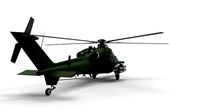
TAI AgustaWestland T129 ATAK
...or advanced attack and reconnaissance missions in hot and high environments and rough geography in both day and night conditions.
cg_trader
$17
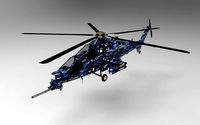
T129 Army Blue
...or advanced attack and reconnaissance missions in hot and high environments and rough geography in both day and night conditions.
cg_trader
$21
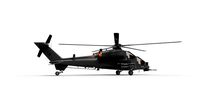
TAI AgustaWestland T129
...unit cost of roughly us$50 million. aircraft military vehicle fighter jet air plane helicopter infantry chopper military aircraft
cg_trader
$12
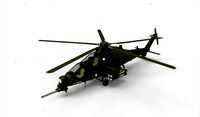
T 129 Helicopter
...advanced attack and reconnaissance missions in hot and high environments and rough geography in both day and night conditions.[6]
3d_export
$15

Agusta A129 Mangusta
...s been developed by turkish aerospace industries in cooperation with agustawestland for the turkish army and potential customers.
3d_export
$60

agusta a129 mangusta
...s been developed by turkish aerospace industries in cooperation with agustawestland for the turkish army and potential customers.
cg_trader
$13

Agusta A129 Mangusta
...r company to agusta. the a129 has undergone several combat deployments since entering service with the italian army in the 1990s.
3d_export
$14

TAI Anka
...s national intelligence organization for signal intelligence. anka has accumulated more than 90,000 flight hours as of march 2021
cg_trader
$29
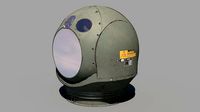
Asel Flir 300 T
...imension. aselsan flir 300 t targeting pod camera helicopter t129 atak attack apache military thermal other gun apache helicopter
cg_trader
$16

TAI Anka UAV
...ce missions, anka has evolved into a modular platform with synthetic aperture radar, precise weapons and satellite communication.
Atak
turbosquid
$49
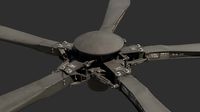
Main Rotor T 129 Atak Helicopter
...3d model main rotor t 129 atak helicopter for download as max on turbosquid: 3d models for games, architecture, videos. (1517043)
3d_export
$145

T129 Atak with Ultra High Textures include gimp and psd files
...ronment texture included fully textured and uv-mapped (non overlapping) *** no other software or plugın used after renderi̇ng ***
3ddd
$1

Dancing Water Speakers
...dancing water speakers 3ddd atak , колонки колонки с...
3d_export
$60

agusta a129 mangusta
...1990s. a derivative of the a129, the tai/agustawestland t129 atak has been developed by turkish aerospace industries in cooperation...
3d_export
$15

Agusta A129 Mangusta
...1990s. a derivative of the a129, the tai/agustawestland t129 atak has been developed by turkish aerospace industries in cooperation...
3d_export
$15
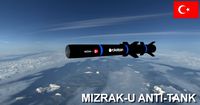
mizrak-u anti-tank missile
...undersecretariat for defence industries (ssm), specifically to provide t-129 atak combat helicopters with an indigenous guided missile.<br>the umtas has...
3d_export
$15
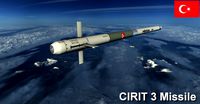
roketsan cirit 3 missile
...launched by turkey to equip the turkish army's t-129 atak ah-1p cobra and ah-1w super cobra attack helicopters with...
unrealengine
$66

T129 ATAK Attack Helicopter
...place
game ready, mid poly, detailed t129 atak military helicoper including guns moving parts and rockets with two color options
thingiverse
free

ATAK iPhone 4/4s case by Smitka313
...atak iphone 4/4s case by smitka313
thingiverse
modified phone case for buddy's ironman team
thingiverse
free

Zoraki 906 Stand (9 mm P.A.K. blank gun) by JoshuaCalvert
...p.a.k. blank gun) by joshuacalvert thingiverse stand for the atak arms ltd. zoraki mod. 906 blank gun. i printed...
Reconnaissance
3d_export
free

reconnaissance drone
...reconnaissance drone
3dexport
3d_export
$5
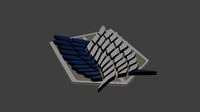
reconnaissance corps
... anime attack of titans, all colored elements are separated from each other, everything is done neatly, and the price is minimal.
3d_export
$30

Of reconnaissance drone Dziga
...target designation.<br>the drone is equipped with a 2 kw gasoline generator. allowing you to stay in the air up to 10 hours
cg_studio
$99

SD.KFZ 250/9 - Reconnaissance Vehicle3d model
....c4d .lwo .obj - sd.kfz 250/9 - reconnaissance vehicle 3d model, royalty free license available, instant download after purchase.
3d_export
$89
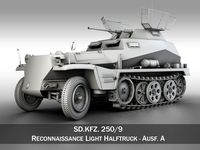
SDKFZ 250 Reconnaissance Vehicle 3D Model
...4x4 troop
sdkfz 250 reconnaissance vehicle 3d model download .c4d .max .obj .fbx .ma .lwo .3ds .3dm .stl panaristi 77987 3dexport
3d_export
$7
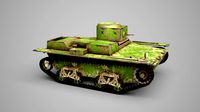
Modern vehicle reconnaissance tank
...connaissance tank
3dexport
3ds max vr render quads normal maps.the texture format is png and the material is the vray material.
3d_export
$7

Modern vehicle reconnaissance tank
...connaissance tank
3dexport
3ds max vr render quads normal maps.the texture format is png and the material is the vray material.
turbosquid
$30

Armored reconnaissance and patrol vehicle BRDM-2
...e and patrol vehicle brdm-2 for download as max, obj, and fbx on turbosquid: 3d models for games, architecture, videos. (1249800)
3d_export
$7

Modern Vehicle Reconnaissance armored vehicle
...e armored vehicle
3dexport
3ds max vr render quads normal maps.the texture format is png and the material is the vray material.
3d_export
$7

Modern vehicles equipped reconnaissance tank
...connaissance tank
3dexport
3ds max vr render quads normal maps.the texture format is png and the material is the vray material.
129
turbosquid
$9

Lamp 129
...alty free 3d model lamp 129 for download as max, obj, and fbx on turbosquid: 3d models for games, architecture, videos. (1500756)
turbosquid
$48

Ring 129
... available on turbo squid, the world's leading provider of digital 3d models for visualization, films, television, and games.
turbosquid
$25

Rosette 129
... available on turbo squid, the world's leading provider of digital 3d models for visualization, films, television, and games.
turbosquid
$25

Rosette 129
... model rosette 129 3d model for download as max, obj, and stl on turbosquid: 3d models for games, architecture, videos. (1712623)
turbosquid
$9

Rosette 129
... available on turbo squid, the world's leading provider of digital 3d models for visualization, films, television, and games.
turbosquid
$9

Office 129
... available on turbo squid, the world's leading provider of digital 3d models for visualization, films, television, and games.
evermotion
$7
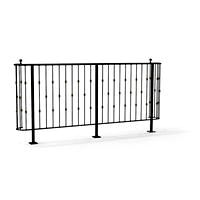
railing 129 am79
...key sculptures 129 am79 railing
highly detailed architecture railing with all textures and materials.. evermotion 3d models shop.
evermotion
$120

Archmodels vol. 129
...visualizations. this collection comes with high quality modular sofas with all textures and materials. evermotion 3d models shop.
evermotion
$7

chair 129 AM147
...model of chair with textures, shaders and materials. it is ready to use, just put it into your scene.. evermotion 3d models shop.
evermotion
$14

Furniture 129 AM29
...el of sofa with all textures, shaders and materials. it is ready to use, just put it into your scene.. evermotion 3d models shop.
Turkish
3d_export
free
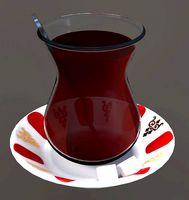
turkish tea
...turkish tea
3dexport
famous turkish tea with its cult glass
3d_export
$10

turkish oak
...turkish oak
3dexport
3ddd
$1

Turkish hamam sink
...turkish hamam sink
3ddd
хамам
turkish hamam sink
turbosquid
$5

Turkish Coffee
...osquid
royalty free 3d model turkish coffee for download as on turbosquid: 3d models for games, architecture, videos. (1688067)
turbosquid
$2

Turkish Tea
...osquid
royalty free 3d model turkish tea for download as c4d on turbosquid: 3d models for games, architecture, videos. (1547169)
turbosquid
$2

Turkish Hookah
...uid
royalty free 3d model turkish hookah for download as fbx on turbosquid: 3d models for games, architecture, videos. (1562632)
turbosquid
free

Turkish Sabre
...quid
free 3d model turkish sabre for download as max and fbx on turbosquid: 3d models for games, architecture, videos. (1293022)
3d_export
$5
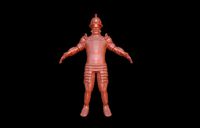
medieval turkish soldier
...medieval turkish soldier
3dexport
medieval turkish soldier made with zbrush
3d_export
$5

medieval turkish soldier
...medieval turkish soldier
3dexport
medieval turkish soldier made with zbrush
3ddd
$1
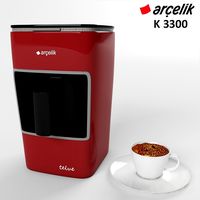
Turkish coffee machine
...turkish coffee machine
3ddd
кофемашина
turkish coffe arcelik, beko
Helicopter
3d_export
free

Helicopter
...helicopter
3dexport
helicopter
archibase_planet
free

Helicopter
...planet
helicopter apache military helicopter aircraft
helicopter apache n100512 - 3d model (*.3ds) for exterior 3d visualization.
archibase_planet
free

Helicopter
...helicopter
archibase planet
helicopter aircraft
helicopter bellh13 n040612 - exterior 3d visualization.
3ddd
$1
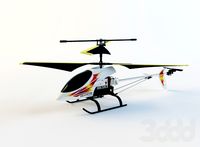
helicopter
...helicopter
3ddd
вертолет
toy helicopter
archibase_planet
free

Helicopter
...helicopter
archibase planet
helicopter aircraft
helicopter n200214 - 3d model (*.gsm+*.3ds) for exterior 3d visualization.
archibase_planet
free

Helicopter
...helicopter
archibase planet
helicopter aircraft
helicopter n190214 - 3d model (*.gsm+*.3ds) for exterior 3d visualization.
archibase_planet
free

Helicopter
...helicopter
archibase planet
helicopter aircraft
helicopter n030414 - 3d model (*.gsm+*.3ds) for exterior 3d visualization.
archibase_planet
free
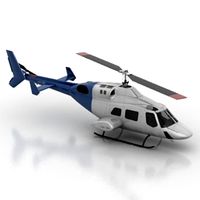
Helicopter
...helicopter
archibase planet
helicopter aircraft
helicopter n160714 - 3d model (*.gsm+*.3ds) for exterior 3d visualization.
archibase_planet
free

Helicopter
...helicopter
archibase planet
helicopter aircraft
helicopter an 12 n160312 - 3d model (*.3ds) for exterior 3d visualization.
archibase_planet
free

Helicopter
...helicopter
archibase planet
helicopter aircraft
helicopter n110412 - 3d model (*.gsm+*.3ds) for exterior 3d visualization.
Attack
turbosquid
$6

Attack Helicopter
...
royalty free 3d model attack helicopter for download as obj on turbosquid: 3d models for games, architecture, videos. (1212798)
turbosquid
$10

Attack Drone
...royalty free 3d model attack drone for download as ma and fbx on turbosquid: 3d models for games, architecture, videos. (1627775)
turbosquid
$10

Attack Drone
...d model attack drone for download as blend, fbx, dae, and obj on turbosquid: 3d models for games, architecture, videos. (1525521)
turbosquid
$70

Attack Fighter
... available on turbo squid, the world's leading provider of digital 3d models for visualization, films, television, and games.
turbosquid
$20

Attack Drone
... available on turbo squid, the world's leading provider of digital 3d models for visualization, films, television, and games.
turbosquid
$15
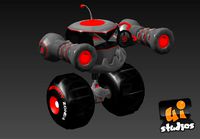
Attack Bot
... available on turbo squid, the world's leading provider of digital 3d models for visualization, films, television, and games.
turbosquid
$5

Attack Helicopter
... available on turbo squid, the world's leading provider of digital 3d models for visualization, films, television, and games.
turbosquid
$1
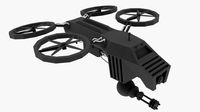
Attack Drone
... available on turbo squid, the world's leading provider of digital 3d models for visualization, films, television, and games.
turbosquid
free

Attack on earth.max
... available on turbo squid, the world's leading provider of digital 3d models for visualization, films, television, and games.
3d_ocean
$25
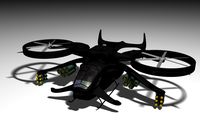
Attack Ship
...ture avatar. the ship was created in c4d and has rotatable engines and props for animation purposes. the engines can either mo...
T
design_connected
$11

T & T
...t & t
designconnected
dark t & t computer generated 3d model. designed by de ryck, christophe.
3d_export
$5
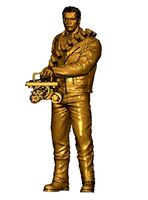
t-800
...t-800
3dexport
t-800
3ddd
$1

Table T
...table t
3ddd
журнальный
table t
3ddd
free

T-Rex
...t-rex
3ddd
t-rex
rrrrrr
3d_export
$5
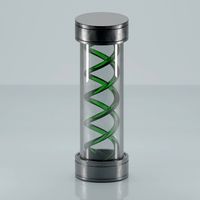
t-virus
...t-virus
3dexport
it's t-virus
3d_export
$5

T-26T
...t-26t
3dexport
artillery tractor on the t-26 chassis ussr
3ddd
$1

T 45
...t 45
3ddd
t-45
кабинет руководителя t 45
12 предметов
подробнее:http://www.prezident-mebel.ru/index.php?productid=1541
3ddd
free

SAFE T
...safe t
3ddd
огнетушитель
креативные огнетушители от компании safe t
3d_export
free
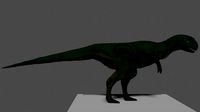
t-rex
...t-rex
3dexport
t-rex have normal map and base color textures
3d_export
$75
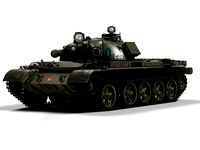
T-55
...nally, but these improvements made the tank more efficient and lethal. the t-55 was officially adopted by the soviet army in 1958
